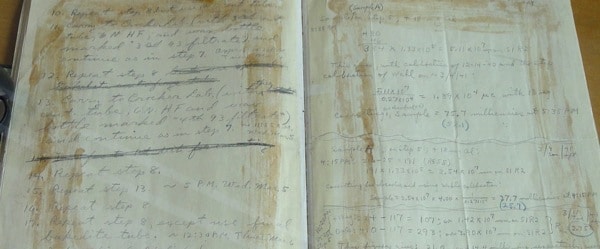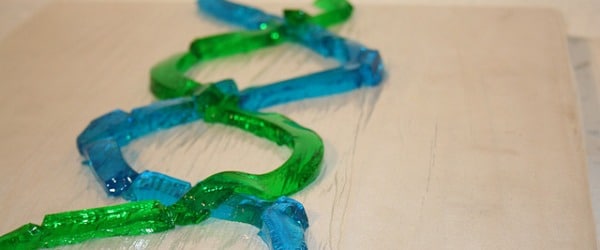Just about any molecular biology experiment will involve the action of enzymes or other active proteins. And when enzymes are involved, the pH of your experimental environment is going to change. This is because most enzymatic reactions involve the loss or gain of hydrogen ions (protons), which modifies the pH of the environment.
Biological systems are extremely sensitive to changes in pH, which can alter or even shut down your experiment. So, selecting a buffer that will effectively keep your experiment’s pH stable is essential to its success.
In other experiments, such as those mimicking a disease state or adverse environmental conditions (acid rain, anyone?), it may be useful to create buffered conditions with a higher or lower pH.
We’ve already discussed how buffers work, and how to calculate or find pKas, so now we can answer the question: what makes a good buffer?
The “Good” news about better buffers
Biologists didn’t always have the luxury of a wide range of biological active buffers. Before the 1960s, biologists had little to choose from that worked in the pH range between 6 and 8. Worse, available buffers, like phosphate, borate and Tris were ineffective at biological pHs, produced undesired chemical reactions or were toxic to cells.
Norman Good, a professor of plant science at Michigan State University, put an end to this problem. Starting with results published in 1966, Good found about a dozen zwitterionic chemicals (neutral molecules containing both a negative and positive charge) that worked well in biological experiments. They also had the ability to buffer hydrogen ions between pH 6 and 8 and were not toxic or reactive. Today, “Good’s buffers” applies to nearly all the two-dozen plus buffers in use today.
Good buffer criteria
There a number of criteria to consider for choosing the right buffer for an experiment. Here are the main selection factors:
pKa
Most biological reactions take place at a pH between 6 and 8, so ideal buffers have pKa values in this range to provide maximum buffering capacity there. Most buffers work best at a pH within 1 unit of their pKa at 20°C. If you think your experiment will lower the environmental pH, then select a buffer with a pKa that’s just a little lower than your working pH. Likewise, select a buffer with a pKa slightly higher if you expect your experiment to raise your working pH.
Solubility
Buffers should be very soluble in water, and minimally so in nonpolar solvents (fats, oils, and organic solvents). This prevents the buffer from accumulating in cell membranes, vesicles and other nonpolar compartments in biological systems.
Membrane impermeable
A buffer should not readily pass through cell membranes—this also reduces the disproportionate accumulation of buffer in subcellular structures.
Minimal salt effects
Highly ionic buffers can cause problems or complications in biological systems. However, salts can be added to adjust the compound’s buffering capacity. Avoid citrate and phosphate buffers in reactions that are calcium-dependent (Tris also chelates calcium).
Influences on dissociation
Buffer concentration, temperature, and ionic strength (the measure of ion concentration) should have minimal impact on the dissociation of the buffer.
Ionic strength
This deserves special mention because you need to make sure your buffer doesn’t have much impact on the ionic concentration of your experimental milieu. Physiological ionic strength is between 100 – 200 mM of KCl or NaCl. Some buffers, like phosphate, can drastically impact the concentration of ions in a solution, while Good’s buffers generally don’t have that effect.
Cation interactions
If the buffers form complexes with cationic ligands, the complexes should be soluble. Ideally, at least some of the buffering compounds will not form complexes.
Stability
The buffers should be chemically stable, resisting enzymatic and non-enzymatic degradation.
Biochemical inertness
The buffers should not influence or participate in any biochemical reactions.
Optical absorbance
Buffers should not absorb visible or ultraviolet light at wavelengths between 230 nm and 700 nm. This prevents interference with spectrophotometric assays.
Ease and cost
Buffers should be easily prepared and purified from inexpensive materials.
These, then, are the “Goods” on buffers!
References
Applichem (2008). Biological Buffers. www.applichem.com
Good, N.E., et al. (1966). Hydrogen ion buffers for biological research. Biochemistry, 5(2), 467-.







